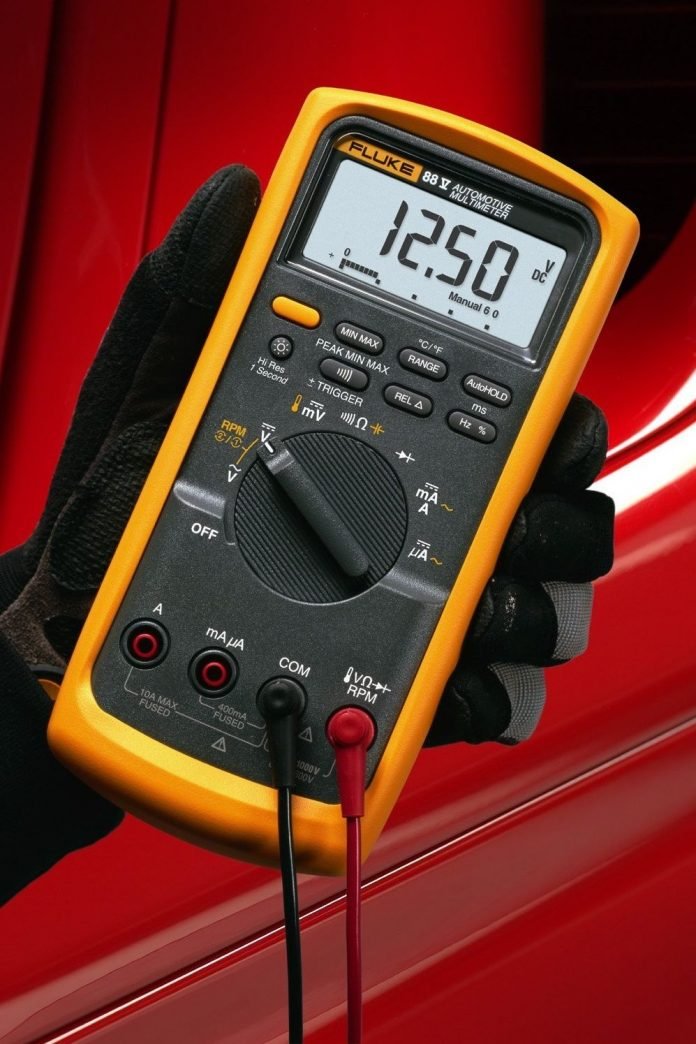Last Updated on November 29, 2023 by Asfa Rasheed
Digital multimeters can be used as amps and ohm meters and voltmeters by setting the dial to the desired function. Therefore, it is possible to measure current, electrical resistance and voltage.
Table of Contents
This article describes the operation of a digital multimeter
Only in the form of an ohmmeter. It can be used to measure the electrical resistance of the circuit. Thus the reading of zero (0) means that there is no resistance in the circuit, but it represents the infinite in the open cycle.
However, a digital multimeter, which acts as an ohmmeter, uses its own battery to test the resistance. Therefore, the best multimeter for electricians should not be given to the tested circuit to prevent damage. So the next time you go to check the electrical resistance, disconnect the cables from the circuit to prevent damage to the ohmmeter.
Unlike multicultural analog ohmers that need to be adjusted before use, digital multimeters do not need to be adjusted. This is because it automatically agrees. In fact, this can be verified by combining the leaders together.
All you have to do is connect the two wires on each side of the jumper
wire needed for the test. For example, to test a wire harness, connect one wire to one side and the other to the other. The work gives her a single reading, and a flawless unlimited reading.
However, even if you use a digital multimeter as your ohmmeter, there are different types and you should choose the one that meets your needs. Some have moderate reading characteristics, while others have at least moderate reading ability. Again, some diodes come with test capabilities.
Everything you buy is your decision! As mentioned earlier,
The second test is related to the voltage drop test. For example, if a particular light bulb does not work and you want to solve the problem at home, use a digital multimeter (used as a potentiometer) in the light bulb cycle. If it is full voltage, you should know that the location of the problem may be a light bulb, socket or ground connection.
On the other hand, if you install or operate a new light bulb and it still does not burn, the problem is in the socket or ground. Also connect the voltmeter to the ground terminal of the socket and the zero voltmeter reading shows zero volts.
Digital multimeters are currently the most reliable choice for testing current, resistance and voltage testing. They provide accurate measurements and are easy to use. In other words, with a little practice, anyone can use it as a test tool.
A versatile digital device that combines three experimental devices, a simple voltmeter, an ammeter and an ohmmeter into one easy-to-use and portable unit. This is a simple and helpful guide on how to use the features of each test included in the multimeter.
The voltmeter must be measured
Voltage, basically the capacity of the device, is measured in voltmeters.
Change the function switch to “V =” setting to measure the DC voltage using the voltmeter function. Connect the black and red covers to the multimeter. A red “VΩ” connects to the designated red input terminal. A black wire is needed to connect to a terminal called “COM”, which means “standard terminal”.
Connected with a pencil, you are ready to measure the voltage in your circuit. Connect the red lead wire to the high power terminal. Connect the black lead wire to the lower terminal.
Ampere measurement from amp
Ampere is the amount of current flowing through an electrical circuit.
To measure amperes using the current function, you need to connect the conductors to the voltmeter separately with the wires. The first step is to set the function key to the “A =” point on the dial. Then connect the red wire to the 300mA terminal and the black wire to the COM terminal.
Once the guides are set as described, they can be connected in series with the meter setting. To measure the magnifier, simply open the circuit and insert a counter between the openings. Since it uses a 300mA terminal, the results are displayed in millimeters
Ohm meter with ohmmeter
OM is a unit of measurement that represents the amount of electrical resistance in a circuit.
Use the ohmmeter feature on your digital multimeter to measure OMS. All you have to do first is disconnect the power supply and the circuit from the measuring circuit. When everything is off, turn on the task switch. Connect the red wire to the VΩ terminal. Connect the black conductor to the COM terminal.
The screen should be labeled “OL”. Indicates overload.
Read More: Many things can instead cause your electrical device to turn on or, in some cases,
















